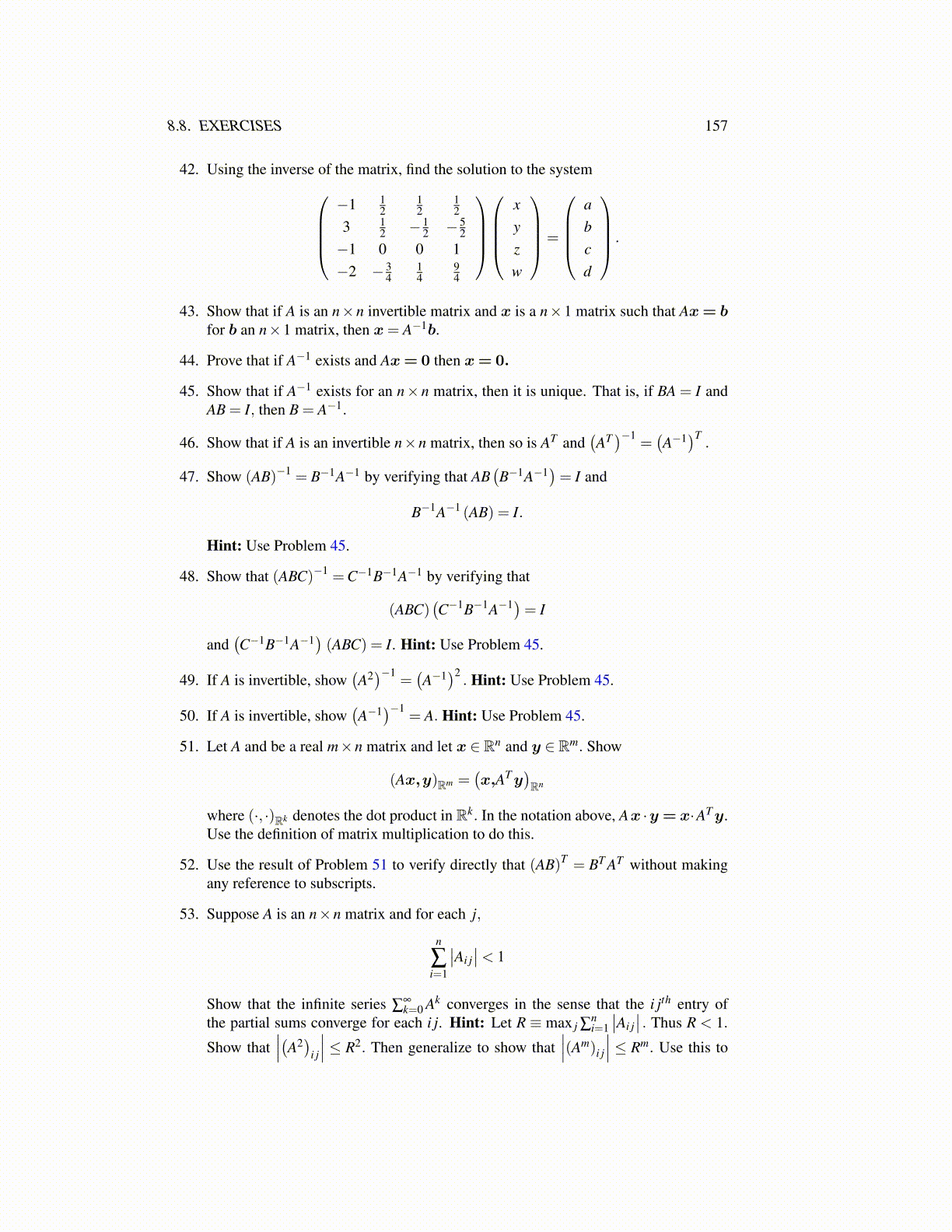
8.8. EXERCISES 157
42. Using the inverse of the matrix, find the solution to the system−1 1
212
12
3 12 − 1
2 − 52
−1 0 0 1−2 − 3
414
94
xyzw
=
abcd
.
43. Show that if A is an n×n invertible matrix and x is a n×1 matrix such that Ax= bfor b an n×1 matrix, then x= A−1b.
44. Prove that if A−1 exists and Ax= 0 then x= 0.
45. Show that if A−1 exists for an n×n matrix, then it is unique. That is, if BA = I andAB = I, then B = A−1.
46. Show that if A is an invertible n×n matrix, then so is AT and(AT)−1
=(A−1
)T.
47. Show (AB)−1 = B−1A−1 by verifying that AB(B−1A−1
)= I and
B−1A−1 (AB) = I.
Hint: Use Problem 45.
48. Show that (ABC)−1 =C−1B−1A−1 by verifying that
(ABC)(C−1B−1A−1)= I
and(C−1B−1A−1
)(ABC) = I. Hint: Use Problem 45.
49. If A is invertible, show(A2)−1
=(A−1
)2. Hint: Use Problem 45.
50. If A is invertible, show(A−1
)−1= A. Hint: Use Problem 45.
51. Let A and be a real m×n matrix and let x ∈ Rn and y ∈ Rm. Show
(Ax,y)Rm =(x,ATy
)Rn
where (·, ·)Rk denotes the dot product in Rk. In the notation above, Ax ·y = x·ATy.Use the definition of matrix multiplication to do this.
52. Use the result of Problem 51 to verify directly that (AB)T = BT AT without makingany reference to subscripts.
53. Suppose A is an n×n matrix and for each j,
n
∑i=1
∣∣Ai j∣∣< 1
Show that the infinite series ∑∞k=0 Ak converges in the sense that the i jth entry of
the partial sums converge for each i j. Hint: Let R ≡ max j ∑ni=1
∣∣Ai j∣∣ . Thus R < 1.
Show that∣∣∣(A2
)i j
∣∣∣ ≤ R2. Then generalize to show that∣∣∣(Am)i j
∣∣∣ ≤ Rm. Use this to